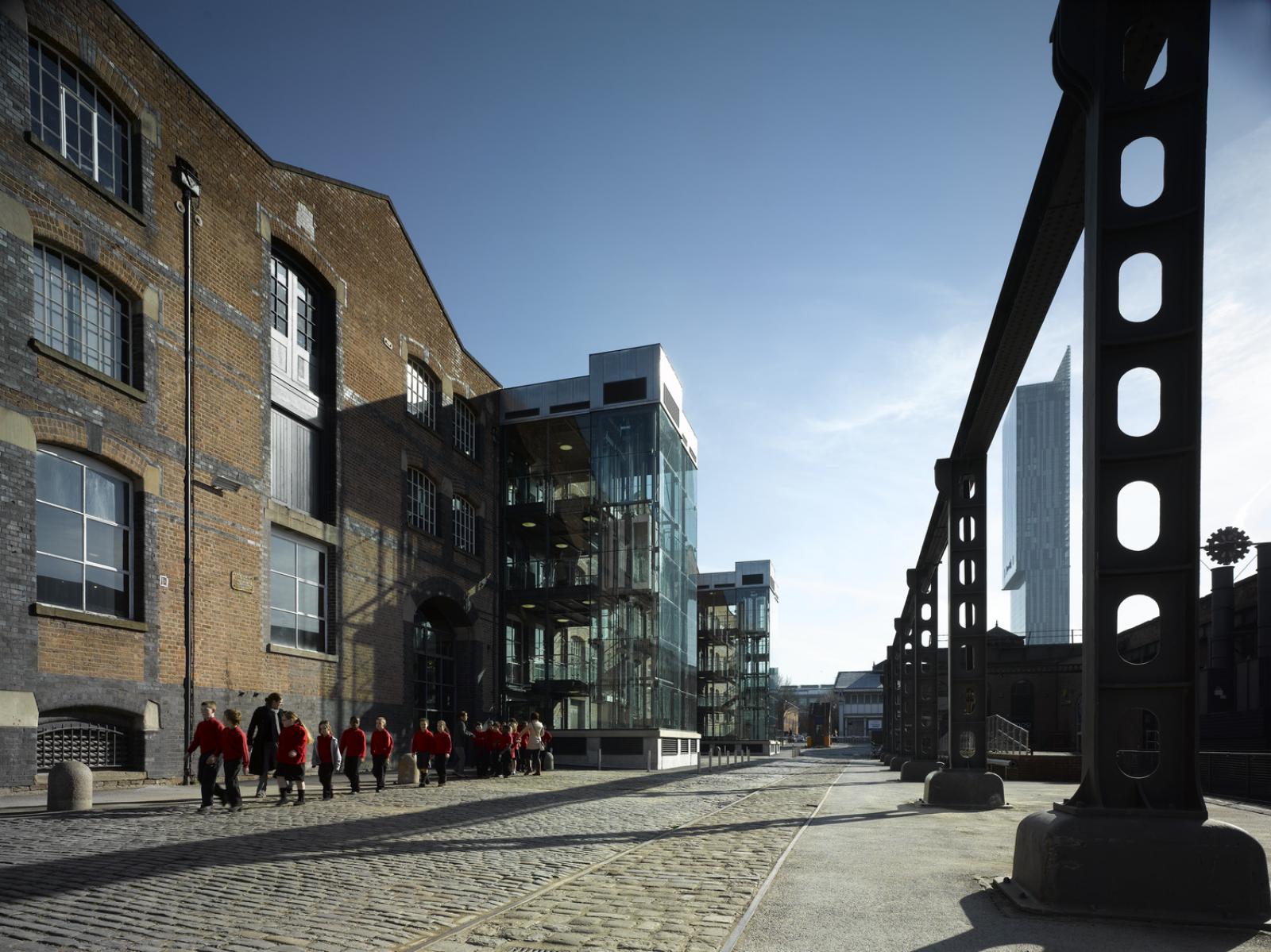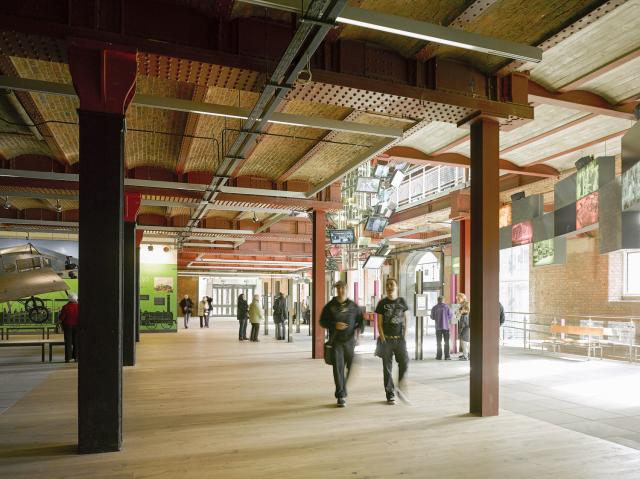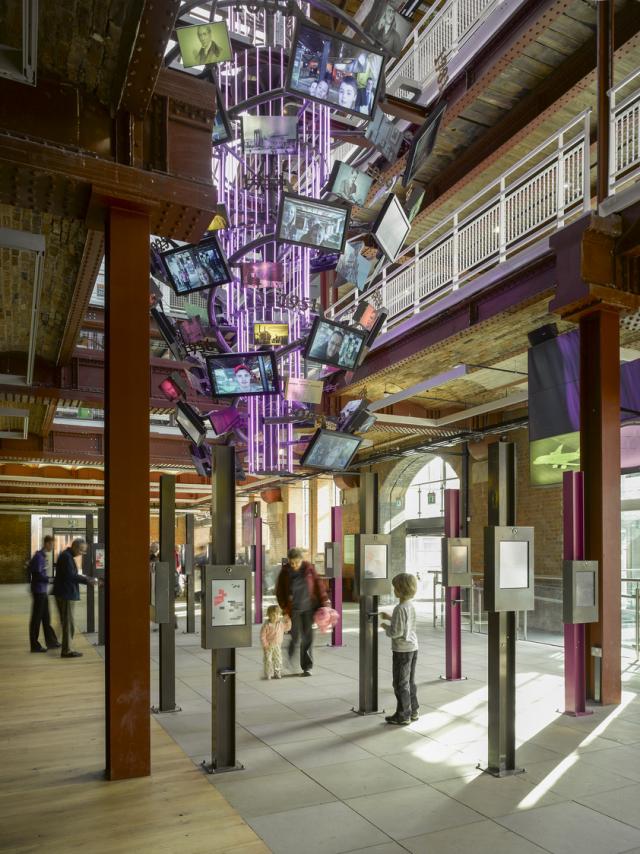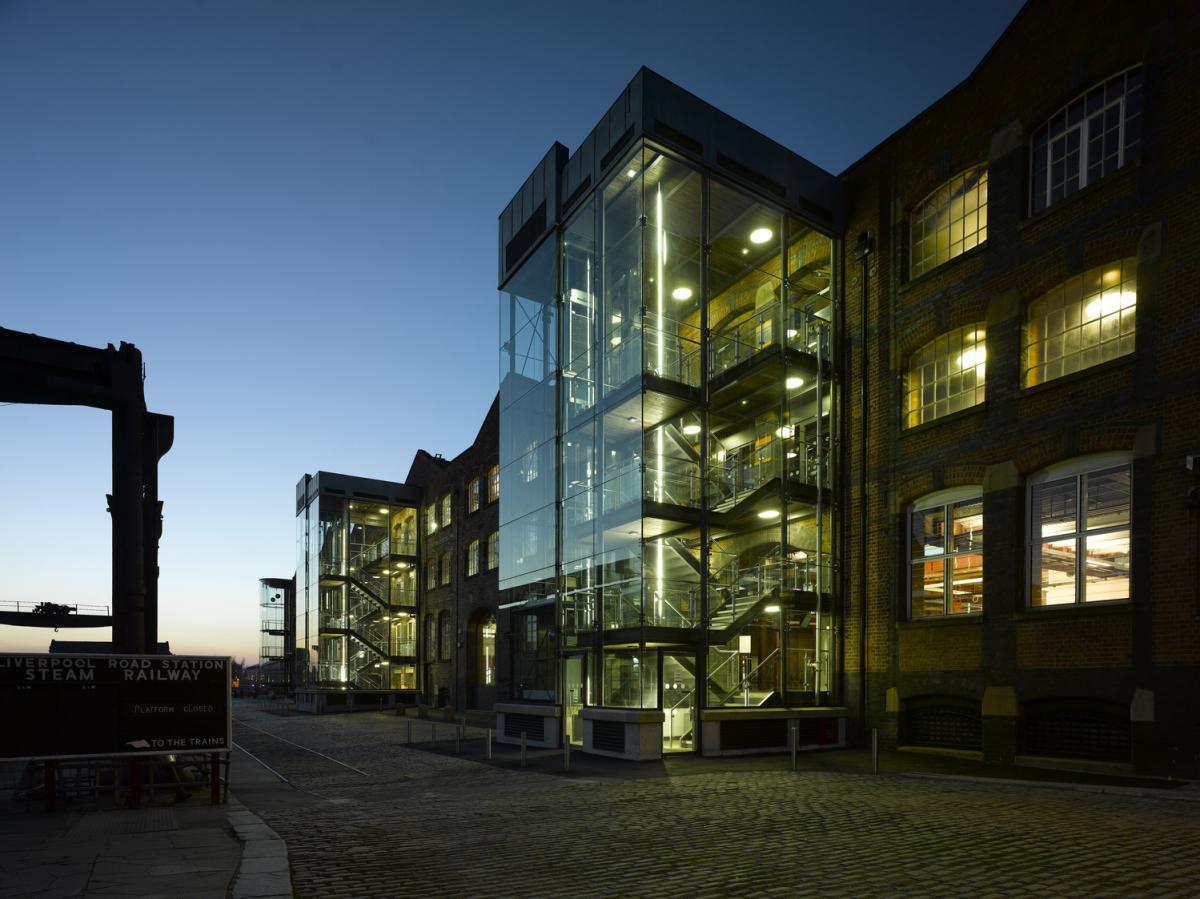
Heritage
Conservation
Built on the site of the world’s oldest surviving passenger railway station, Manchester’s Science + Industry Museum showcases the city’s stories of innovation from the build up to the Industrial Revolution to the hi-tech developments of today. The entrance to the museum is through the site’s magnificent Grade II listed New Warehouse.
We were appointed to redevelop the New Warehouse to tell the museum's own story, and to welcome and engage up to 800,000 visitors a year to what is Manchester’s most popular museum.
The original museum facilities were designed for 250,000 visitors each year. The museum, however, was consistently welcoming almost three times this number. As a result, the museum operators were finding that the space – as it was originally designed – was no longer coping with the expectations of visitors. The circulation route through the building being one of the main constraints.


Previous projects had left a cluttered and confused first impression, dominated by large ramps rising through a central atrium. These were removed and two new glazed stairways were built on the outside of the building, allowing us to rationalise the accommodation inside with a new ground floor gallery, extended conference facilities and an education suite on the first floor.
At the same time, by stripping out inappropriate additions, were we able to reveal the architectural character of this Grade II listed Victorian warehouse, let natural light in, and make the building itself an exhibit and part of the museum’s enduring appeal.
In approaching the interior spaces, we wanted to create a design response that would both celebrate the story of Manchester's industrial past, while demonstrating how technology and industry continue to shape the city’s future. This manifested itself by creating imprints on the building that were both clear and obvious, so that visitors could see how technology was being applied to a piece of industrial heritage to give it new meaning in a 21st century context.

The original design featured masonry arches that span between wrought iron beams. Taking this as inspiration, we adopted a similar but contemporary approach. This involved creating reinforced concrete formed on arched timber shuttering, where the imprint from the shuttering echoes the rhythm of the brick arches.
A new introductory gallery – Revolution Manchester – was also created to embed new technology and interpretation and create a clear sense of arrival. Interactive design studio, Kin Design, made iconic objects focal points, interpreting them through technology that involves visitors, tells stories, and introduces people to new areas of the museum and its collections. A key element is the media wall, which wraps around the space, fragments, and rises through the atrium to create a sculptural ‘chandelier’.
The remodelling is an example of our rational conservation approach, balancing the need for continual development while delivering something that adds to people’s experience of Manchester’s industrial heritage.
Image credits
© Ian Bruce
Stephen Anderson
Stephen leads the practice's heritage team, specialising in projects that involve listed buildings and heritage assets and responding to their impact on place and local communities.
Neal Charlton
Neal leads Buttress' arts and culture team, with a focus on the restoration, care and adaptation of historic and listed buildings.

